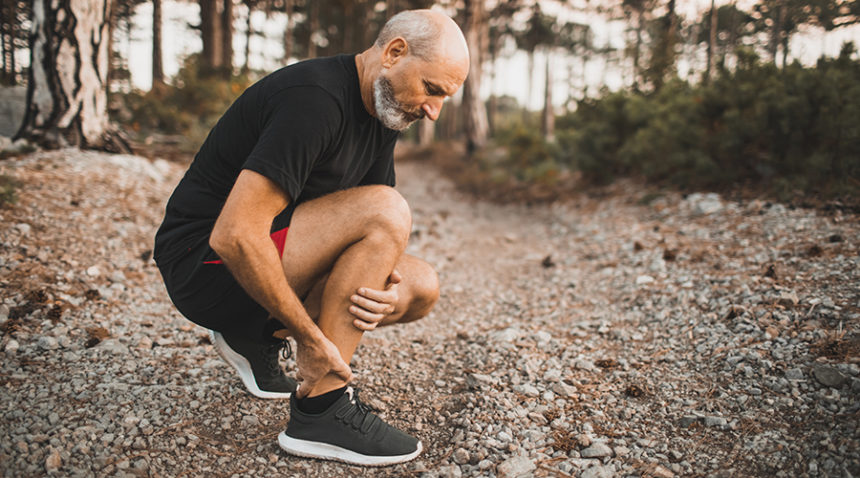Shin splints may be a minor injury, but they can have a major impact on your ability to get around without pain.
Medically known as “tibial stress syndrome,” shin splints occur when the lining of your lower leg bone becomes inflamed and damaged. This is typically felt along the middle to lower portions of the shinbone, the front of the lower leg. This type of inflammation can lead to pain with movement, either sharp or dull and aching.
The pain might ease as movement continues, or “it can also persist, causing a person to stop their physical activity for relief. If left untreated, it can progress to occur with simple daily activities such as walking or even resting,” says UNC Health sports medicine specialist Nailah Adams, MD.
Shin splints are an overuse injury, meaning your leg muscles and bones have been under stress from running, jumping and repetitive movements. All kinds of athletes experience shin splints, including runners, dancers and people who play high-impact sports such as tennis, basketball and soccer.
“Some studies have shown as high as 18 percent of running injuries are reported as shin splints, and 4 percent of military recruits in basic training experience them,” Dr. Adams says. “Anyone who does repetitive high-impact activity can be affected.”
Tips to Treat Shin Splints at Home
1. Decrease your activity.
If you’re experiencing pain, the best thing you can do is to ease up on training. It is important to give the bone and muscles time to heal.
“Since this is an overuse injury, many people find relief in decreasing mileage or distance of running,” Dr. Adams says.
2. Apply ice.
Ice your shins twice a day for three days or until the pain is gone. Ice can help reduce inflammation and swelling.
3. Elevate legs after activity.
Raise your shins above your heart when you rest using pillows or blankets. Elevation reduces swelling by controlling blood flow to the injured area and decreases pain.
4. Take NSAIDs for relief.
Nonsteroidal anti-inflammatory medication can help with the pain. Try ibuprofen (Motrin, Advil) or naproxen (Aleve); for a non-NSAID option, acetaminophen (Tylenol) can work, too.
5. Try orthotics in your shoes.
Unsupportive footwear can also be a part of the problem, so it may be time to look into orthotics. These special kind of shoe inserts help to reduce the impact force on your shins when you are engaging in a physical activity. They help to align and stabilize your foot and ankle, taking stress off the lower leg. You can try store-bought orthotic devices or invest in a custom set.
6. Call your doctor if pain persists.
In many cases, shin splints can heal on their own with at-home methods, but it may be necessary to see a doctor if symptoms are severe or last longer than two weeks.
If you have intense or throbbing pain, your shin is red and feels hot to the touch, or your leg is swelling significantly, call a doctor promptly. You might be dealing with a fracture in your shinbone, which your doctor can diagnose with an imaging scan.
“When you touch it, do you feel pain at a specific point, rather than all over the shin? Do you feel a bony lump or have swelling? If so, it’s important to see your doctor,” Dr. Adams says.
How to Prevent Shin Splints
After recovering from a shin splint, the last thing you want to do is experience another one. Here are some strategies for prevention:
- Use shoes with appropriate cushioning, support or orthotics.
- Change your athletic shoes every 300 miles.
- Avoid excess running on hills or uneven surfaces.
- Warm up and stretch before and after exercise. Make sure to stretch your calves and hamstrings.
- Run or exercise on soft surfaces instead of concrete or paved surfaces.
- Gradually increase the intensity of your activity, instead of rapidly.
- Maintain a healthy body weight.
- If you’re prone to shin splints, see a physical therapist to learn stretches and movement tips that can help prevent further injury.
If you are experiencing ongoing pain from shin splints, talk with your doctor. If you need a doctor, find one near you.

